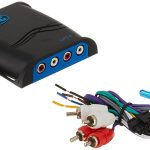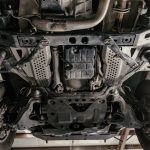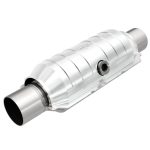Discover The 2022 Honda CRV Catalytic Converter Location: Unlock Optimal Performance Today!
2022 Honda CRV Catalytic Converter Location
Introduction
Welcome, Converter user! In this article, we will explore the 2022 Honda CRV catalytic converter location. The catalytic converter plays a crucial role in reducing harmful emissions from a vehicle’s exhaust system. By understanding its location, you will have a better understanding of your CRV’s emissions control system and be able to identify any potential issues that may arise. Let’s dive in and discover where the catalytic converter is located in the 2022 Honda CRV.
Before we proceed, let’s first understand the purpose of a catalytic converter. This device is designed to convert harmful pollutants, such as carbon monoxide and nitrogen oxides, into less harmful substances before they are released into the atmosphere. It helps in reducing air pollution and ensures that your vehicle complies with environmental regulations. Now, let’s explore the location of the catalytic converter in the 2022 Honda CRV.
1 Picture Gallery: Discover The 2022 Honda CRV Catalytic Converter Location: Unlock Optimal Performance Today!
2022 Honda CRV Catalytic Converter Location
The catalytic converter in the 2022 Honda CRV is located in the exhaust system, specifically in the section known as the exhaust manifold. The exhaust manifold is responsible for collecting exhaust gases from the engine’s cylinders and directing them into the exhaust system. Within the exhaust manifold, you will find the catalytic converter, which resembles a small box-like structure.
Emoji :mag_right: The catalytic converter can be identified by its honeycomb-like structure, which is made of a ceramic or metallic substrate. This substrate is coated with a catalyst, usually consisting of precious metals like platinum, palladium, and rhodium, that facilitate the chemical reactions necessary for pollutant conversion.

Image Source: ytimg.com
Emoji :mag_right: To locate the catalytic converter in your 2022 Honda CRV, you can start by looking under the vehicle. The catalytic converter is typically positioned near the front of the car, between the engine and the muffler. It can be found underneath the car’s chassis, around the center or slightly towards the front. Look for a metal structure that is connected to the exhaust pipe and has a heat shield to protect it from excessive heat.
Emoji :mag_right: Another way to locate the catalytic converter is by following the exhaust pipe from the engine towards the rear of the vehicle. The catalytic converter is usually positioned along this path, closer to the engine. It may be necessary to raise the vehicle using a jack and secure it with jack stands to access the catalytic converter more easily.
Emoji :mag_right: It is important to note that the catalytic converter location may vary slightly depending on the specific model and trim of the 2022 Honda CRV. Therefore, it is always recommended to refer to the vehicle’s owner’s manual for the most accurate information regarding the catalytic converter’s location in your particular CRV.
What is the purpose of the catalytic converter in the 2022 Honda CRV?
The catalytic converter in the 2022 Honda CRV serves the same purpose as in any other vehicle. Its main function is to reduce harmful emissions by converting them into less harmful substances before they are released into the atmosphere. This helps in minimizing air pollution and ensuring compliance with environmental regulations. The catalytic converter plays a vital role in maintaining the overall performance and efficiency of the CRV’s exhaust system.
How does the catalytic converter work in the 2022 Honda CRV?
The catalytic converter works through a series of chemical reactions. As the exhaust gases pass through the honeycomb-like structure of the catalytic converter, the precious metal catalysts promote the conversion of harmful pollutants. Carbon monoxide (CO) is converted into carbon dioxide (CO2), nitrogen oxides (NOx) are converted into nitrogen (N2), and unburned hydrocarbons (HC) are converted into water (H2O) and carbon dioxide (CO2).
The conversion process occurs through oxidation and reduction reactions, facilitated by the precious metal catalysts. The catalysts provide a surface for the reactants to bind and undergo the necessary transformations. In this way, the catalytic converter acts as a filter, transforming harmful pollutants into less harmful substances that can be safely released into the environment.
When should the catalytic converter in the 2022 Honda CRV be replaced?
The catalytic converter in the 2022 Honda CRV is designed to last for a long time. However, certain factors may lead to its degradation or failure. If you experience any of the following symptoms, it is recommended to have your catalytic converter inspected by a professional:
1. Decreased engine performance or power.
2. Increased exhaust emissions.
3. Unusual smells, such as a rotten egg odor, coming from the exhaust.
4. Illuminated check engine light.
5. Loud rattling noises from the catalytic converter.
These symptoms may indicate a malfunctioning or clogged catalytic converter, which can negatively impact the vehicle’s performance and emissions. It is important to address any issues promptly to prevent further damage to the catalytic converter or other components of the exhaust system.
Where can I purchase a replacement catalytic converter for the 2022 Honda CRV?
If you require a replacement catalytic converter for your 2022 Honda CRV, it is recommended to visit an authorized Honda dealership or a reputable automotive parts store. These establishments can provide you with genuine or high-quality aftermarket catalytic converters that are specifically designed for your CRV model. It is important to ensure that the replacement catalytic converter meets the required specifications and complies with local emissions regulations.
Why is the catalytic converter location important in the 2022 Honda CRV?
The catalytic converter location is important in the 2022 Honda CRV for several reasons:
1. Maintenance and Inspection: Knowing the location of the catalytic converter allows for easier access during maintenance and inspection procedures. This enables technicians to perform checks and identify any issues promptly, ensuring the proper functioning of the catalytic converter and the entire exhaust system.
2. Troubleshooting: Understanding the catalytic converter’s location helps in troubleshooting any problems related to emissions control and exhaust system performance. By knowing where to find the catalytic converter, you can visually inspect it for any physical damage or signs of malfunction, such as rattling noises or discoloration.
3. Compliance: The catalytic converter plays a crucial role in meeting emissions regulations. By being aware of its location, owners can ensure that the catalytic converter is present and properly functioning. This is essential for passing emissions tests and maintaining compliance with environmental standards.
How can I maintain the catalytic converter in the 2022 Honda CRV?
To maintain the catalytic converter in the 2022 Honda CRV, it is important to follow these recommendations:
1. Use Quality Fuel: Opt for high-quality gasoline to reduce the risk of fuel contaminants that can damage the catalytic converter.
2. Regular Maintenance: Adhere to the recommended maintenance schedule for your CRV, including oil and filter changes, spark plug replacements, and air filter inspections. A properly maintained engine reduces the likelihood of excessive emissions that can impact the catalytic converter’s performance.
3. Avoid Engine Misfires: Engine misfires can lead to unburned fuel reaching the catalytic converter, causing damage over time. Address any engine misfire issues promptly to ensure the longevity of the catalytic converter.
4. Be Mindful of Fluid Leaks: Fluid leaks, such as engine oil or coolant, can contaminate the catalytic converter and impair its function. Regularly check for leaks and repair them promptly to prevent damage to the catalytic converter and other components.
5. Drive Responsibly: Avoid aggressive driving habits, such as rapid acceleration and hard braking, as they can increase exhaust emissions and strain the catalytic converter. Smooth and steady driving promotes better fuel combustion and reduces the stress on the catalytic converter.
Advantages and Disadvantages of the 2022 Honda CRV Catalytic Converter Location
The location of the catalytic converter in the 2022 Honda CRV offers both advantages and disadvantages. Let’s explore them in detail:
Advantages:
1. Compact Design: The location of the catalytic converter in the exhaust manifold allows for a more compact design. This saves space in the engine compartment and contributes to the overall efficiency of the vehicle’s exhaust system.
2. Efficient Emissions Control: Placing the catalytic converter closer to the engine improves its efficiency in reducing harmful emissions. The shorter distance between the engine and the catalytic converter allows for quicker warm-up times, ensuring optimal performance from the start.
3. Enhanced Durability: The positioning of the catalytic converter in the 2022 Honda CRV, protected by the heat shield and chassis, increases its durability. It is less exposed to external elements and potential damage, resulting in a longer lifespan.
Disadvantages:
1. Limited Accessibility: The location of the catalytic converter in the 2022 Honda CRV, especially underneath the vehicle, can make it challenging to access for maintenance or replacement. Special tools and equipment may be required, and professional assistance may be necessary for certain tasks.
2. Heat Exposure: While the heat shield provides some protection, the catalytic converter is still subjected to high temperatures generated by the engine. Prolonged exposure to excessive heat can affect its performance and durability over time.
3. Costly Repairs: Due to its intricate design and specialized materials, repairing or replacing a catalytic converter can be expensive. The location of the catalytic converter in the 2022 Honda CRV may contribute to higher labor costs, as it requires more effort to access and work on compared to other components.
Frequently Asked Questions (FAQs)
1. Can I clean a clogged catalytic converter in the 2022 Honda CRV?
Unfortunately, cleaning a clogged catalytic converter is not a viable solution. Once a catalytic converter becomes clogged, it is best to replace it with a new one. Cleaning attempts may further damage the converter or only provide temporary relief.
2. Can a catalytic converter be removed from the 2022 Honda CRV?
It is illegal and highly discouraged to remove the catalytic converter from any vehicle, including the 2022 Honda CRV. The catalytic converter is an essential part of a vehicle’s emissions control system and removing it can result in increased pollution and potential legal consequences.
3. How long does a catalytic converter in the 2022 Honda CRV typically last?
The lifespan of a catalytic converter in the 2022 Honda CRV can vary depending on various factors, such as driving conditions, maintenance practices, and fuel quality. Generally, a well-maintained catalytic converter can last up to 10 years or more. However, certain circumstances, such as exposure to excessive heat or contamination, can shorten its lifespan.
4. Can I drive my 2022 Honda CRV with a faulty catalytic converter?
It is not recommended to drive a 2022 Honda CRV with a faulty catalytic converter. A malfunctioning catalytic converter can negatively impact the vehicle’s performance and emissions. It is best to have the issue diagnosed and repaired by a qualified technician to ensure proper functioning of the vehicle’s emissions control system.
5. Does the 2022 Honda CRV catalytic converter come with a warranty?
Yes, the catalytic converter in the 2022 Honda CRV typically comes with a warranty. The specific terms and conditions of the warranty may vary, so it is important to consult the vehicle’s owner’s manual or contact an authorized Honda dealership for accurate information regarding the warranty coverage.
Conclusion
In conclusion, understanding the 2022 Honda CRV catalytic converter location is essential for maintaining the vehicle’s emissions control system and ensuring compliance with environmental regulations. The catalytic converter, located in the exhaust manifold, plays a crucial role in reducing harmful emissions and promoting a cleaner atmosphere. By being aware of its location, owners can perform regular inspections, address any issues promptly, and maintain the overall performance and efficiency of their CRV’s exhaust system. Remember to follow recommended maintenance practices, drive responsibly, and seek professional assistance when needed. By doing so, you can enjoy a smooth and eco-friendly driving experience with your 2022 Honda CRV.
Final Remarks
Disclaimer: The information provided in this article is for educational and informational purposes only. It is not intended to be a substitute for professional advice or guidance. Always consult a qualified technician or refer to the vehicle’s owner’s manual for accurate information and guidance regarding your specific 2022 Honda CRV model.
This post topic: Converter



